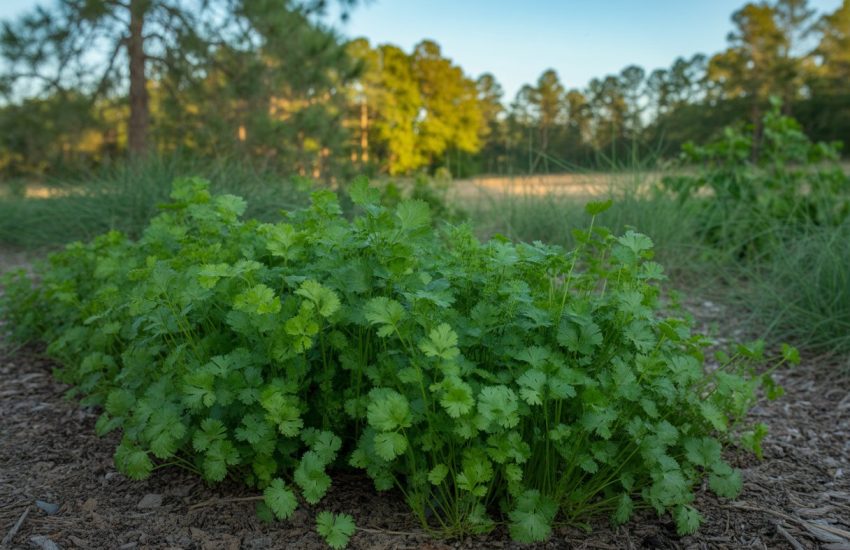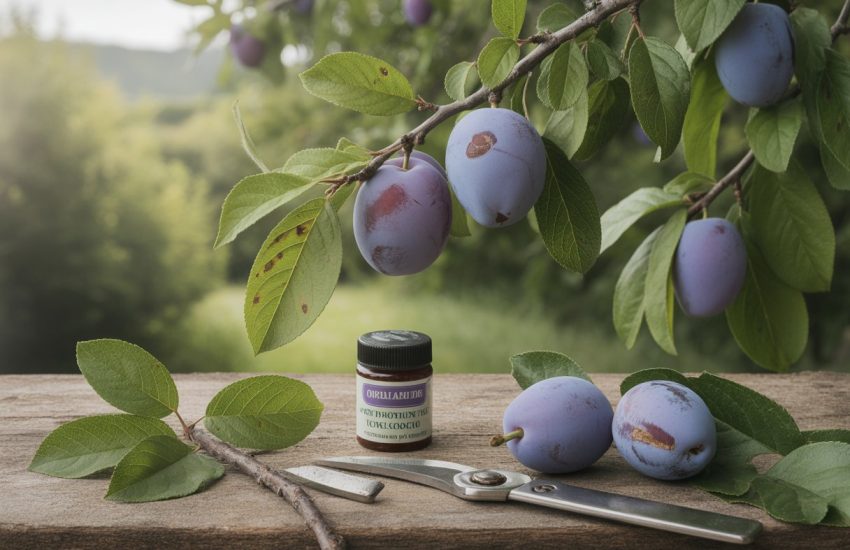Rose Leaves Turning Yellow – Causes and Solutions
The rose is truly an incredible flower that never seems to lose its appeal. The range of colors and the delicate fragrance it produces makes it a delight to behold even for a short while.
But if your roses are yellow, you will want to know what causes this color change and how best to remedy it.
The color of the rose leaves is due to the presence of chlorophyll. This is the same green substance found in plants that is responsible for turning the sun’s light into energy for the plant. In other words, it helps plants photosynthesize.
There are many things that can cause chlorophyll to decrease in roses, which ultimately leads to a yellowing of the leaves and can even affect other parts of the bush. Knowing what causes this change will help you avoid and deal with it accordingly.

8 Reasons Why Rose Leaves Turn Yellow and how to solve it
1. Chlorosis
This is a condition that occurs when the amount of food that reaches the plant’s roots is less than usual.
Symptoms include yellowing and thinning leaves, pale growth tips and often stem wilt. This can happen to roses when there are not enough nutrients in their soil, when temperatures or moisture levels fluctuate too much, or if there is a higher than optimum nitrogen level in the soil.
It can also be caused by lack of oxygen when the plant is overwatered.
How to solve this problem:
If the leaves are too dry, apply some water on them. However if it is in the roots, see if you can amend the soil with more nitrogen or add some compost to boost the nutrients. If it is caused by excess nitrogen levels in your soil then you need to reduce the amount of fertilizer.
2. Soil pH
Many things affect the pH of a soil, one of which is the amount of iron. Iron is necessary for plants to live, but if the soil is too rich in iron, it can cause a yellowing effect in leaves.
Alkaline soil means the pH level is above 7.0, while acidic soil has a pH below 7.0. Roses prefer a pH level between 6.5 to 7.0.
How to solve this problem:
To solve this problem, you need to amend the soil by adding some sulfur or potassium to counteract the effects of acidity or alkalinity in your soil.
If you live in an urban area where leaves have fallen from all sorts of trees, your rose bushes might have become “poisoned”. To counter these effects from the roots, use a compost that adds organic material and mow and shred leaves before giving them to your roses.
3. Over watering or saturated soil
Leaves yellowing are caused by the lack of humidity in the bush. This can be tested by looking at your seedlings to see if they are wrinkled or sodden.
If you have overwatered your rose bushes, the leaves will become soft and slowly turn yellowish and wither.
Do not be tempted to water too much; excess water is just as damaging and can lead to root rot in the soil, which will cause a whole slew of problems for your roses.
Roses require soil that is neither soggy nor bone dry. A soggy soil can limit oxygen intake to your plant, making it grow poorly or not at all. With a bone dry soil, the plant has no space to take in enough oxygen and will turn yellow.
How to solve this problem:
If you have a rose bush that is sodden and does not respond to watering, then you need to amend the soil with compost to give it some organic matter. Cut fallen leaves from trees near your rose bush in the fall and use this both as mulch and compost for your rose bushes.
4. Pests
A number of pests, such as aphids and white flies, are known to cause a yellowing effect in rose leaves that can last for several months or even longer if left untreated.
If you can see tiny white pests eating your rose leaves, then this is a good indication that they are to blame. If the pests are not treated and removed, the leaves can turn yellow and fall off your bush.
How to solve this problem:
You should cut off and dispose of any areas of the plant that have been infested by pests. You also need to apply a suitable insecticide on the plant’s stems and leaves.
5. Not Enough Light
Light exposure is the only way your plants will photosynthesize and gather food. Leaf chlorophyll is what makes the rose leaves green and nutritious.
If there is not enough light, they will be thinner and more yellow, while their veins will turn pale.
Most plants prefer a moderate temperature of between 20 and 27 degrees Celsius so they can photosynthesize. If the air is too cold or too hot, your plant will not be able to grow and will not produce enough energy for itself.
Temperature also plays a part in how much light your plant gets. Too much shade can prevent the plant from growing properly and reach its full potential.
The same applies to the soil – if you have soggy or waterlogged soil, it can’t let any light reach the rose roots. This will cause your plant to grow upward and remain thin and frail.
How to solve this problem:
You should first keep an eye out for pests like aphids on your roses, as these can clog up the leaves with their bodies and prevent light from getting through. If you do find some pests on your leaves, you should remove them immediately.
Making sure your plant has direct sunlight will ensure you get the most out of your plant and its growth.
If your roses are in pots then make sure to give them plenty of light if you are keeping them indoors.
6. Wrong location or climate
Rose bushes need to be kept in a protected area where they have access to enough water, but not too much; they have sunlight, but not too much; and they have soft ground, but not too soft.
If you live in a harsh and cold place, then your rose bush will eventually need to go indoors. This will not only protect them from the harsh weather, but also keep them strong and healthy.
It is better to have too much sun than not enough light; you do not need a lot of sunshine to keep your plant well-fed.
If your location is too hot for the rose bush, it will weaken its growth and produce smaller specimens that lack vigor.
If your soil is too sandy, it can quickly dry out and make your plant wilt. If your soil is too dark, the nutrients will leach out and your leaves will turn yellow.
How to solve this problem:
Because a rose bush grows slowly at first, it is best to buy a potted one that can be moved indoors during wintertime. The same applies during summertime in places where the heat is too harsh for the roses.
One way to solve a sandy or too dark soil is to buy a fertilizer that contains iron. This will make the soil more alkaline and give the plant extra nutrients to grow.
7. Fungal Infection
There are some fungi that can cause yellowing in rose leaves. Yellow spots on your rose leaves will be the sign of fungal infection.
With some fungi, the spots of yellowing can grow rapidly. They will start out small but become larger and larger over a period of weeks.
If you do not treat the infection, it will spread rapidly throughout the whole rose bush and kill it.
How to solve this problem:
You can treat fungal infection in three simple steps:
1. Prune off any infected leaves from your rose bushes. Make sure that you dispose of these properly as they can infect other plants if they are left behind.
2. Remove any dead or dying branches.
3. Use a fungicide with your watering can and spray the plant’s stems, leaves and buds to prevent fungal infection spreading in the future.
8. Heat Stress
In the summertime, it is very easy for your plant to be heat stressed. A rose bush can only take in so much sunlight before it becomes damaged. Dark mulch can also stress the ross plant by absorbing heat and radiating it back to the plant.
There are a number of signs for heat stress:
• The leaves will turn pale and yellow.
• The edges of the leaves will dry out and wither, while others will drop off the plant entirely.
• The plant will also not produce flowers or blooms.
Heat stress is mostly caused by too much sunlight and not enough water to keep your plant hydrated. If you don’t provide your plants with enough water, it might have to consume vital nutrients from its own roots because it needs them to survive.
How to solve this problem:
To avoid heat stress, make sure that you water your plants regularly and give them some shade during the hottest part of the day.
When you water your plant, do so in the early morning or evening when it is cooler. You can also cover the plant with a glass cloche to protect it from too much heat.
How To Grow Beautiful Roses
Growing roses can be a tedious and long process, but with a few simple steps you can get your own beautiful roses to flourish in no time.
1. Choose the right location
Choose the right location for your rose bush. Choose a spot where it will receive lots of sunlight, but not too much.
Even if you live in an area with bright sunlight, you can still grow roses if you ensure they receive enough sunlight during the day and shade during the hottest part of the day.
You should also choose your rose bush’s location according to your weather conditions and how much sunshine it receives at any given time of the year.
2. Choose the right rose
When choosing your rose bush, you need to take into consideration the type of soil it will grow in, along with the amount of sun it will receive. A rose bush that does not get enough sunlight or water will wither and the leaves will become pale and start to fade.
The benefit of choosing a specific type of rose is that you have more control over its growth and how much sunlight it receives. Pick your rose bush early so that you have enough time to treat and nurture it.
3. Feed your roses well
In order to give your roses ample energy and nutrients, you should feed them regularly. You can do this by either feeding them with fertilizers or giving them extra helpings of water.
4. Prune off dead branches
You should prune off any dead or dying branches from your rose bush as soon as you notice them. Doing this will protect other parts of the plant from being infected and keep it looking healthy and beautiful.
5. Water them like a pro
Watering your rose bush is important as it will help keep its root system healthy, while not allowing the growth of fungus to occur.
Make sure you always water your plant regularly, but make sure that you water it before the sun is at its brightest.
To ensure that you are watering the roots and not the leaves, use a watering can with a long, thin spout so that all of the excess water does not run down the stem.
6. Cut back
A great way to encourage a rose bush to grow and flourish is by cutting it off. Cutting off a rose bush will make sure that the plant keeps growing, producing more blossoms for you to enjoy.
7. Take care of the pests
Pests can do a lot of damage to your rose bush if left unchecked. To ensure that your plant stays healthy and safe, you should wash all of the dead leaves and flowers on a regular basis so that no bugs can breed on them.


